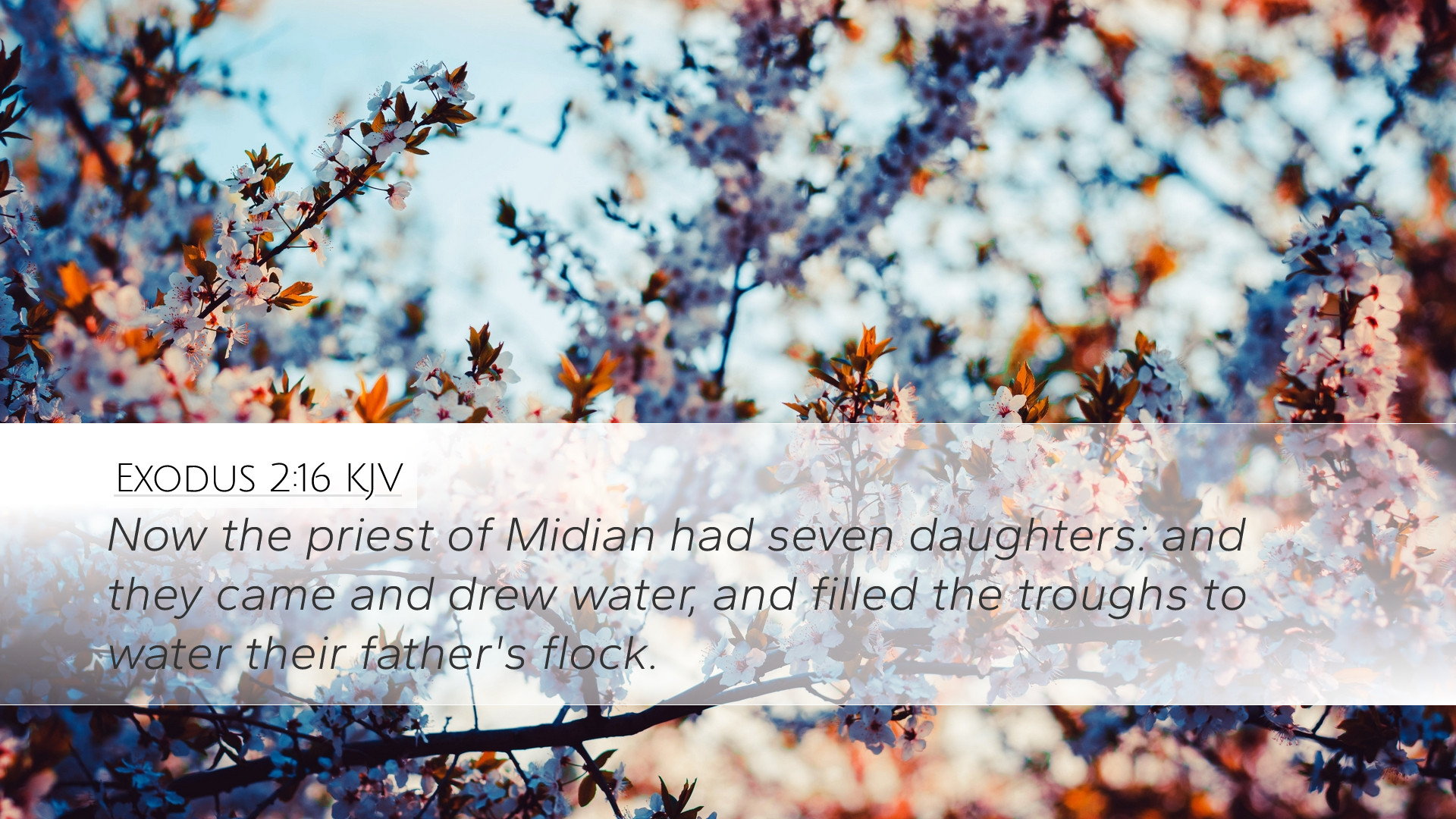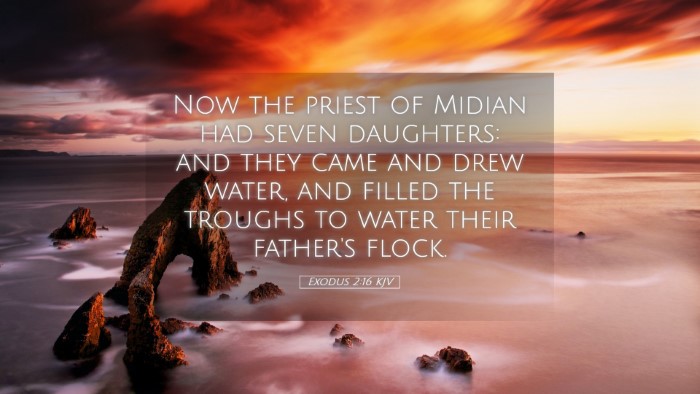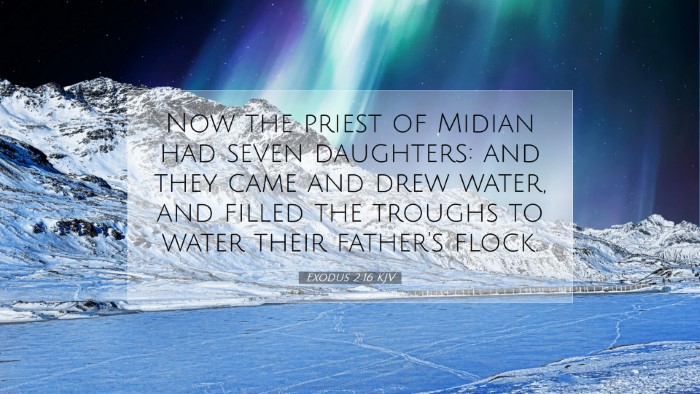Commentary on Exodus 2:16
Exodus 2:16 states, “Now the priest of Midian had seven daughters: and they came and drew water, and filled the troughs to water their father’s flock.” This verse is significant in the context of the life of Moses, who later became a central figure in the Exodus narrative. Various public domain commentaries provide insights into this text, exploring its theological and narrative implications. The following commentary synthesizes perspectives from Matthew Henry, Albert Barnes, and Adam Clarke.
Contextual Background
This verse appears in a narrative that marks a transitional moment in Moses’ life. After fleeing Egypt, Moses finds refuge in Midian, where he encounters the priest of Midian’s daughters, who present an early opportunity for his character to be tested. Below are several key themes derived from the commentaries.
The Priest of Midian
1. Identity and Significance
According to Matthew Henry, the mention of the priest of Midian highlights the religious and cultural milieu in which Moses finds himself. Midian was a region located east of the Red Sea, populated by a nomadic tribe descended from Abraham. The priest’s role indicates a structured religious system, contrasting with the idolatrous practices surrounding Moses in Egypt. Henry notes that such encounters prepare Moses for his leadership role by exposing him to alternative forms of worship and governance.
The Daughters of the Priest
2. Symbolism of the Seven Daughters
In Albert Barnes' commentary, the number seven symbolizes completeness and perfection. The presence of seven daughters suggests a full or complete representation of the priest’s family. Their actions—drawing water—indicate service and responsibility, portraying women in a role of dignity and active participation in communal life. This foreshadows Moses’ own experiences of service as he later leads the Israelites.
The Act of Drawing Water
3. Significance of Water
Commentators agree that the act of drawing water is rich in meaning. Adam Clarke suggests that water symbolizes life and sustenance, essential for both human and animal existence. The act of the daughters filling the troughs reflects a nurturing quality that is fundamental in biblical narratives, reinforcing themes of provision and care that run throughout Scripture. This scene may also parallel later events where Moses provides water for the Israelites in the desert.
Moses' Character Development
4. The Encounter with the Daughters
The encounter between Moses and the daughters of the priest is pivotal. Instead of simply observing as they struggle, Moses intervenes and helps them. This act is noted by Matthew Henry as indicative of Moses’ character—marked by compassion and strength. His willingness to assist reflects the leadership qualities that God would later hone for the deliverance of His people.
Themes of Rescue and Deliverance
5. A Foreshadowing of Future Leadership
This moment serves as a foreshadowing of Moses’ future calling. According to Barnes, every detail of Moses’ life serves a purpose in God’s plan for Israel’s deliverance. His interaction with the daughters emphasizes his role as a protector and provider, setting the stage for his eventual role in leading the Israelites out of Egypt.
Conclusion
Exodus 2:16, while seemingly straightforward, is laden with theological and narrative significance. It introduces themes of divine providence, the development of Moses’ character, and the contrasting cultural elements of his life in Midian versus Egypt. Public domain commentaries provide a rich tapestry of insights that underscore these aspects, aiding pastors, students, theologians, and scholars in understanding the depth of this passage. Moses’ encounter with the daughters of the priest of Midian serves not only as a narrative pivot but as a foundational moment in his preparation for the monumental task of delivering the Israelites.


